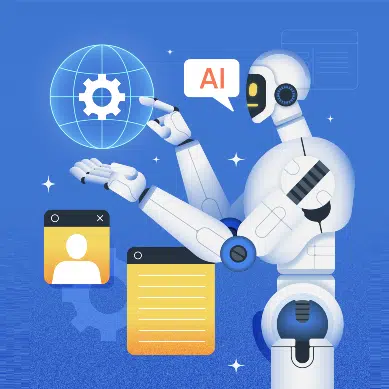Murphy’s Law in Modern Risk Management
Murphy’s Law is a timeless reminder of life’s unpredictability. Its famous adage, “Anything that can go wrong, will go wrong,” urges us to recognize the potential for unforeseen challenges.
In today’s digital age, where cyber attacks are a matter of when rather than if, assessing potential risks and their likelihood of occurrence is only getting more critical.
Yet, while the consequences of such an attack can be severe – including data theft, financial loss, and reputational damage – the likelihood and severity of a specific company falling victim to a sophisticated cyberattack may vary.
This reality invites a critical examination of manual versus automated risk management practices. How do traditional manual methods fare against today’s digital threats? Are they equipped to effectively assess, mitigate, and respond to the evolving risks of the digital age? Conversely, how does automation in risk management enhance practices, empowering organizations to proactively identify and address potential vulnerabilities?

Manual vs. Automated Risk Management
Manual Risk Management
This traditional approach involves manual data entry, reliance on spreadsheets, and human judgment to manage risks. While it offers familiarity, it is susceptible to errors, oversights, and delays, leaving organizations vulnerable to the ramifications of Murphy’s Law.
Spreadsheets may serve as an initial foray into risk management, but their limitations quickly become apparent as organizations grapple with more complex risk landscapes. Here’s why relying solely on spreadsheets for risk management can lead to inefficiencies and missed opportunities:
- Lack of Clarity and Connectivity: The manual nature of spreadsheet inputs makes it challenging to visualize risks and their associated responsibilities. Each row requires separate inputs, leading to disjointed information that fails to connect controls to incidents and actions effectively.
- Passivity in Risk Management: Manual processes often lead to a passive approach to risk management, where stakeholders merely acknowledge risks rather than actively manage them. This perception of risk management as a box-ticking exercise undermines its strategic value and diminishes engagement from leaders and employees.
- Time-Consuming Updates: Updating information in spreadsheets can be laborious and time-wasting, leading to lags or incomplete data that undermine the validity of reporting. In an era of heightened accountability, such delays pose significant risks, as seen in the aftermath of the Enron scandal.
- Limitations in Risk Modeling: Spreadsheets’ inability to provide up-to-date and comprehensive data hampers their usefulness in risk modeling and quantitative risk assessments. Qualitative risk heat maps, while easy to understand, have inherent limitations that impede effective risk management.
- Dependency on Advanced Skills: Developing spreadsheet applications for risk management requires advanced skills and often relies on the availability of the original developer for updates. This dependency introduces vulnerabilities and hampers scalability.
The Promise of Automated Risk Assessments
Risk management automation uses automated risk assessment tools to orchestrate and automate the data collection process, analysis, and ongoing remediation of cybersecurity controls according to a selected risk framework during a risk assessment.
Automated risk management systems leverage technology and data-driven algorithms to streamline processes, enhance accuracy, and provide real-time insights into potential risks. By automating repetitive tasks and integrating multiple data sources, these systems act as a proactive shield against the uncertainties highlighted by Murphy’s Law, empowering organizations to navigate uncertainties more effectively.
Automated risk assessment solutions offer a compelling alternative to manual risk assessments. By leveraging purpose-built software, organizations can overcome the limitations of spreadsheets and unlock several benefits:
- Efficiency and Accuracy: Automated processes streamline risk assessment planning, execution, and reporting, reducing manual effort and minimizing the risk of errors.
- Enhanced Visibility and Collaboration: Centralized systems provide organizational visibility, promoting collaboration and ensuring data consistency across departments.
- Adaptability to Evolving Risks: Integrated risk management platforms can adapt to the changing risk environment, addressing emerging threats such as cyber, privacy, and automated 3rd party risk management.
Start Getting Value With
Centraleyes for Free
See for yourself how the Centraleyes platform exceeds anything an old GRC
system does and eliminates the need for manual processes and spreadsheets
to give you immediate value and run a full risk assessment in less than 30 days
Benefits of Automated Risk Management
Automation in risk assessments allows for quick and immediate onboarding and initiation of a risk assessment, removing the need for learning the framework in depth. It also enables the automated correlation of relevant data from connected tools to the associated controls being assessed by an organization during a risk assessment, providing verified information not subject to human error. Additionally, it allows for cross-mapping common controls across various risk frameworks, saving the company time and resources on data collection that cannot be automatically collected.
- Live Risk Management
Real-time data insights enable organizations to make informed decisions promptly, enhancing agility and responsiveness to emerging risks. Automation minimizes human error by streamlining data collection, analysis, and reporting and ensures consistency in risk management practices.
- Empowering Teams with Data-Driven Decision-Making
Automated risk management empowers teams with actionable insights, enabling them to address risks and capitalize on opportunities proactively. Integration with AI-powered technology facilitates swift adaptation to changing risk landscapes, fostering a culture of continuous improvement and innovation within organizations.
- Impress Stakeholders
Effective stakeholder communication is paramount in risk management. Automated systems enable organizations to deliver real-time risk reports and dashboards, providing stakeholders with up-to-date insights into risk exposures and mitigation strategies. The precision and speed of automated reporting instill confidence among stakeholders, showcasing the organization’s commitment to proactive risk management.
How Companies Conduct Risk Assessments Today
It’s hard to believe, but spreadsheet tools are still commonly used for risk assessments in most small to mid-sized organizations. Even large enterprise organizations that have purchased or licensed risk management tools often default to these more manual options due to the lack of automation, the unfriendly user experience, and the misfit of the purchased tools to the risk assessment process – issues frequently associated with legacy risk management solutions.
Manual and Automated Risk Management: An Over-the-Table Comparison
| PARAMETER | MANUAL PROCESS | AUTOMATED PROCESS |
| COLLECT DATA | Entirely dependent on human effort to gather, input, and verify data | Automated data collection and aggregation, minimizing human intervention |
| ORGANIZE DATA | Data is stored in disparate systems or documents, leading to fragmentation and inefficiency | Centralized platform consolidates data, streamlining organization and accessibility |
| INDICATE RISK LEVELS | Manual assessment prone to errors and inconsistencies due to subjective judgment | Automated risk scoring and categorization based on predefined criteria, ensuring consistency |
| VISUALIZE RISK DATA | Limited visualization options, often relying on manual charting in separate tools | Data visualization tools provide intuitive graphical representations for enhanced risk understanding |
| DISPLAY RELATIONS | Relies on manual analysis to identify and understand relationships between risk factors | Automated tools identify and display correlations between data points for comprehensive analysis |
| BUILD RISK SCENARIOS | Manual construction of scenarios based on individual interpretation and analysis | Automated scenario modeling based on predefined parameters and historical data, facilitating scenario-based decision-making |
| ADD REFERENCE DATA | Manual integration of reference materials into risk assessments, prone to oversight | Automated integration of reference data into risk models, ensuring comprehensive analysis |
| GENERATE METRICS/REPORTS | Manual compilation of data for reporting, leading to delays and potential inaccuracies | Automated report generation with customizable templates, providing real-time insights for informed decision-making |
| FOLLOWUPS | Relies on manual reminders and notifications for follow-up actions, often leading to oversights | Automated reminders and notifications for pending tasks, ensuring timely follow-up and action |
| AUDIT TRAIL | Limited audit trail with manual tracking of changes, making it difficult to trace actions | Automated logging of all actions with timestamps for comprehensive audit trail and accountability |
Introducing Centraleyes
Comprehensive Risk Modeling
Centraleyes automates the process of cyber risk modeling, offering organizations a more thorough and accurate assessment than manual methods. Centraleyes analyzes various risk factors by leveraging data-driven algorithms, providing a holistic view of cyber risk exposure.
Integration with Established Standards
Unlike manual risk management processes that struggle to keep pace with evolving cybersecurity standards, Centraleyes seamlessly integrates with established frameworks such as NIST, ISO, and CIS. This ensures compliance and adherence to industry best practices without manual updates.
Customized Risk Assessment
Centraleyes empower organizations to conduct customized risk assessments tailored to their needs and risk profile. Its systematic approach allows for prioritization of mitigation efforts and more effective resource allocation.
Real-time Monitoring and Collaboration
Centraleyes monitor cybersecurity controls and compliance status, enabling proactive risk management and stakeholder collaboration. This reduces response times and enhances overall cyber resilience.
Strategic Program Design
With Centraleyes’ analytical and consulting services, organizations can design and implement strategic cyber risk management programs. This adaptability helps organizations stay agile despite changing threats and regulatory requirements.
Enhanced Compliance Management
Centraleyes simplifies compliance management by automating the mapping of cybersecurity controls to regulatory requirements and industry standards. This eliminates the manual effort required for compliance reporting and audit preparation.
Start Getting Value With
Centraleyes for Free
See for yourself how the Centraleyes platform exceeds anything an old GRC
system does and eliminates the need for manual processes and spreadsheets
to give you immediate value and run a full risk assessment in less than 30 days






